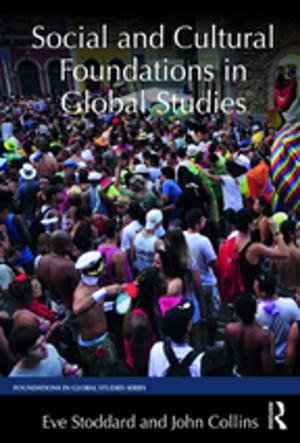Voluntary Associations
Nonfiction, Social & Cultural Studies, Social Science, Philanthropy & Charity, Sociology| Author: | John W. Chapman | ISBN: | 9781351299787 |
| Publisher: | Taylor and Francis | Publication: | September 29, 2017 |
| Imprint: | Routledge | Language: | English |
| Author: | John W. Chapman |
| ISBN: | 9781351299787 |
| Publisher: | Taylor and Francis |
| Publication: | September 29, 2017 |
| Imprint: | Routledge |
| Language: | English |
A vast and complicated array of subject matter is subjected to analysis, comment, and speculation by fifteen contributors representing three separate but contiguous disciplines. Their approaches are as various as one would expect. One is concerned with the bonds that hold associations together, and another with the tendency for the private to become public. One sees associations as interferences with democratic political processes, while another is more impressed by their positive values. Still another shows that the way in which they operate in the political process depends not only on the kind of association but also upon the political context within which they operate.
Pennock and Chapman say that the theorist's job is to speculate and to interpret the facts as he sees them. It is also the theorist's job to suggest hypotheses for testing: to point to lines of inquiry that should be pursued. One cannot read the essays in this volume, without having his eyes opened--or opened wider--both to the paucity of information about the political features of voluntary associations and to the wide variety of aspects from which the subject needs to be approached.
The kinds of questions that need to be examined can be grouped in categories. The first focuses on the individual: What kinds of memberships does he have? Even more, what is the effect upon him of membership in each kind of association? The second examines internal composition and workings of organizations. The third focuses on the state as a whole and the effect of organized groups upon it, the political processes of the associational structure of the society, and modes of behavior of these associations.
Organized groups play an intermediate role in the polity. At the same time, the state, and those charged at any particular time with the performance of its functions, must look primarily to new associations within it to secure compliance with its law and for guidance in shaping those laws.
A vast and complicated array of subject matter is subjected to analysis, comment, and speculation by fifteen contributors representing three separate but contiguous disciplines. Their approaches are as various as one would expect. One is concerned with the bonds that hold associations together, and another with the tendency for the private to become public. One sees associations as interferences with democratic political processes, while another is more impressed by their positive values. Still another shows that the way in which they operate in the political process depends not only on the kind of association but also upon the political context within which they operate.
Pennock and Chapman say that the theorist's job is to speculate and to interpret the facts as he sees them. It is also the theorist's job to suggest hypotheses for testing: to point to lines of inquiry that should be pursued. One cannot read the essays in this volume, without having his eyes opened--or opened wider--both to the paucity of information about the political features of voluntary associations and to the wide variety of aspects from which the subject needs to be approached.
The kinds of questions that need to be examined can be grouped in categories. The first focuses on the individual: What kinds of memberships does he have? Even more, what is the effect upon him of membership in each kind of association? The second examines internal composition and workings of organizations. The third focuses on the state as a whole and the effect of organized groups upon it, the political processes of the associational structure of the society, and modes of behavior of these associations.
Organized groups play an intermediate role in the polity. At the same time, the state, and those charged at any particular time with the performance of its functions, must look primarily to new associations within it to secure compliance with its law and for guidance in shaping those laws.















